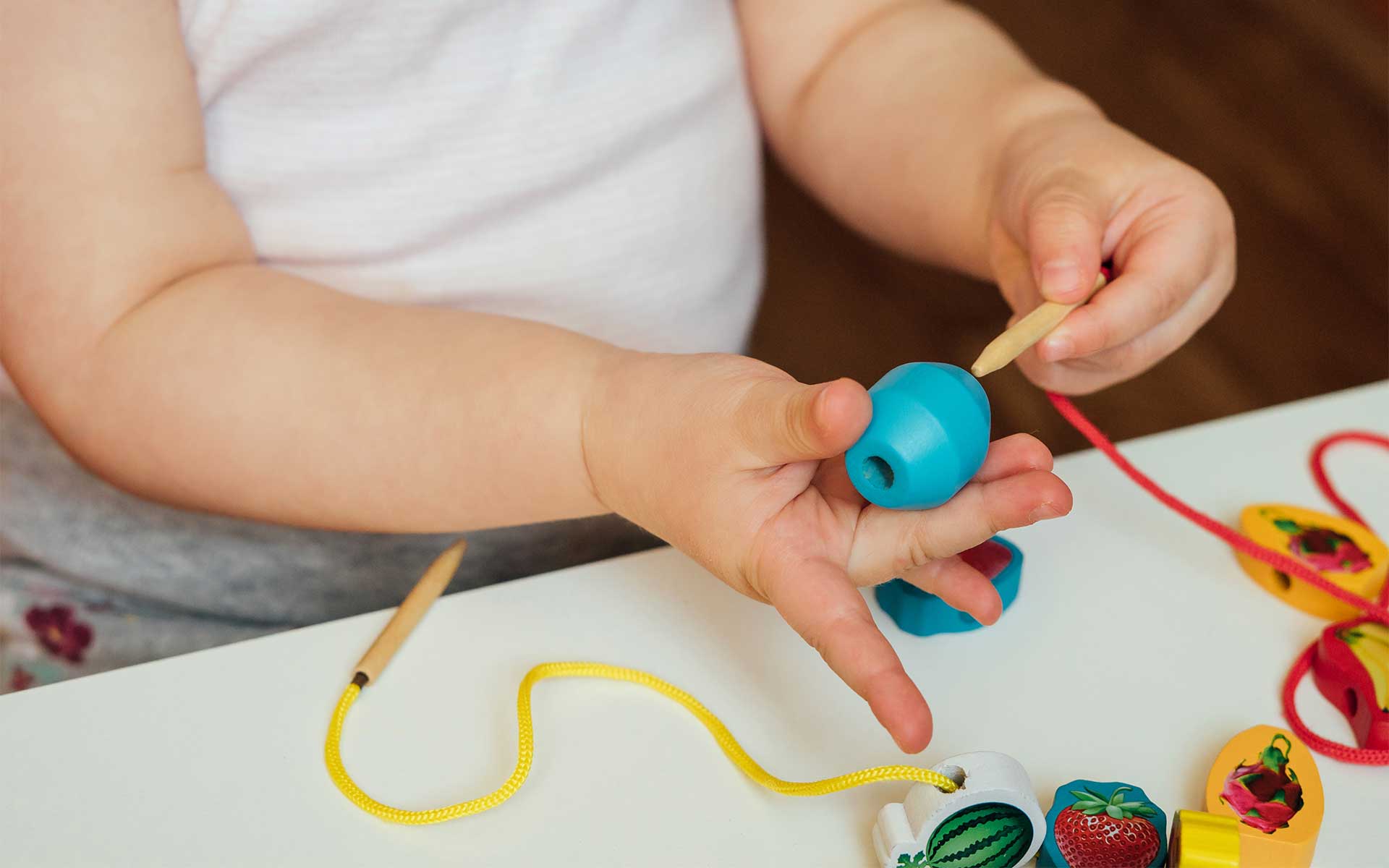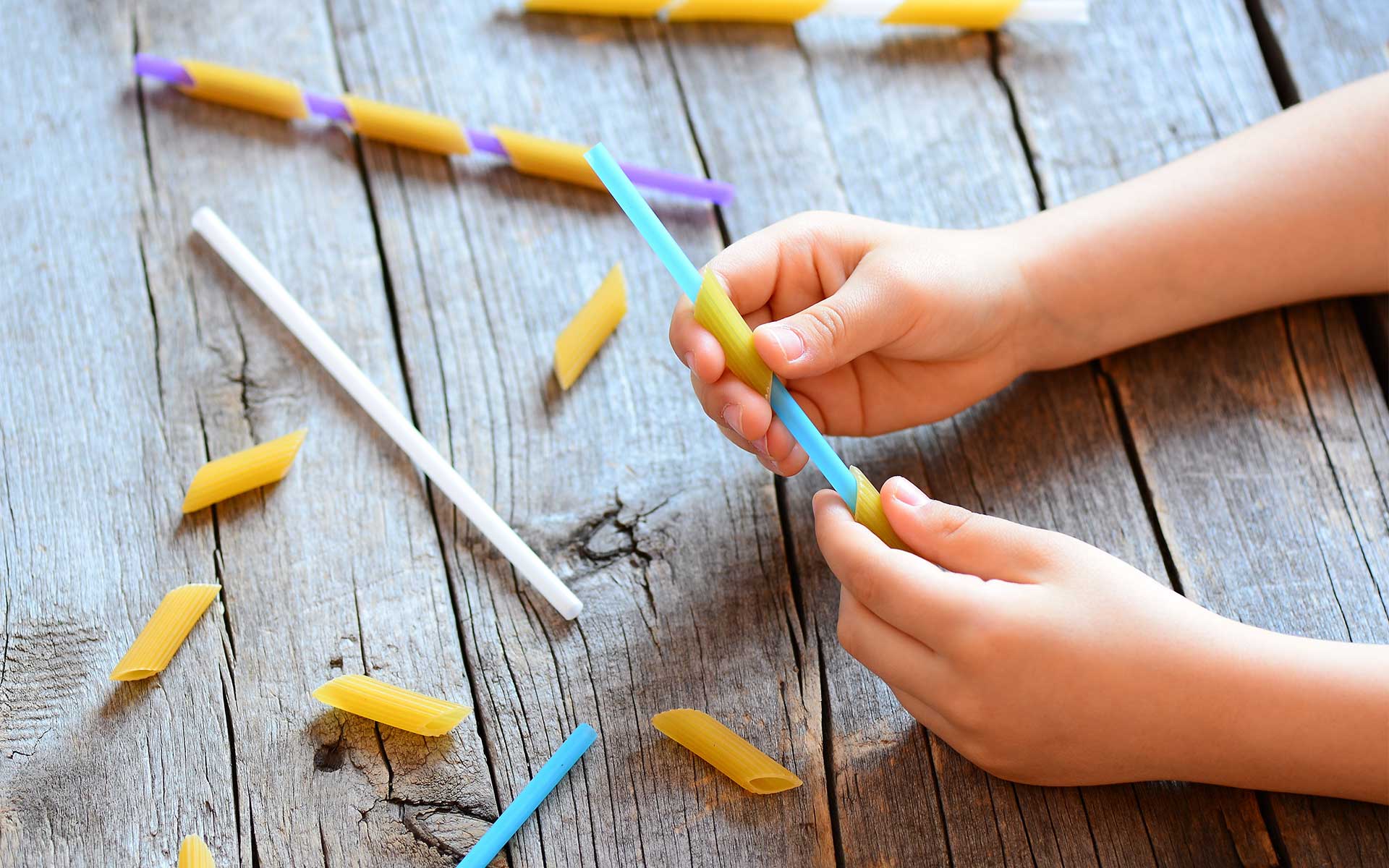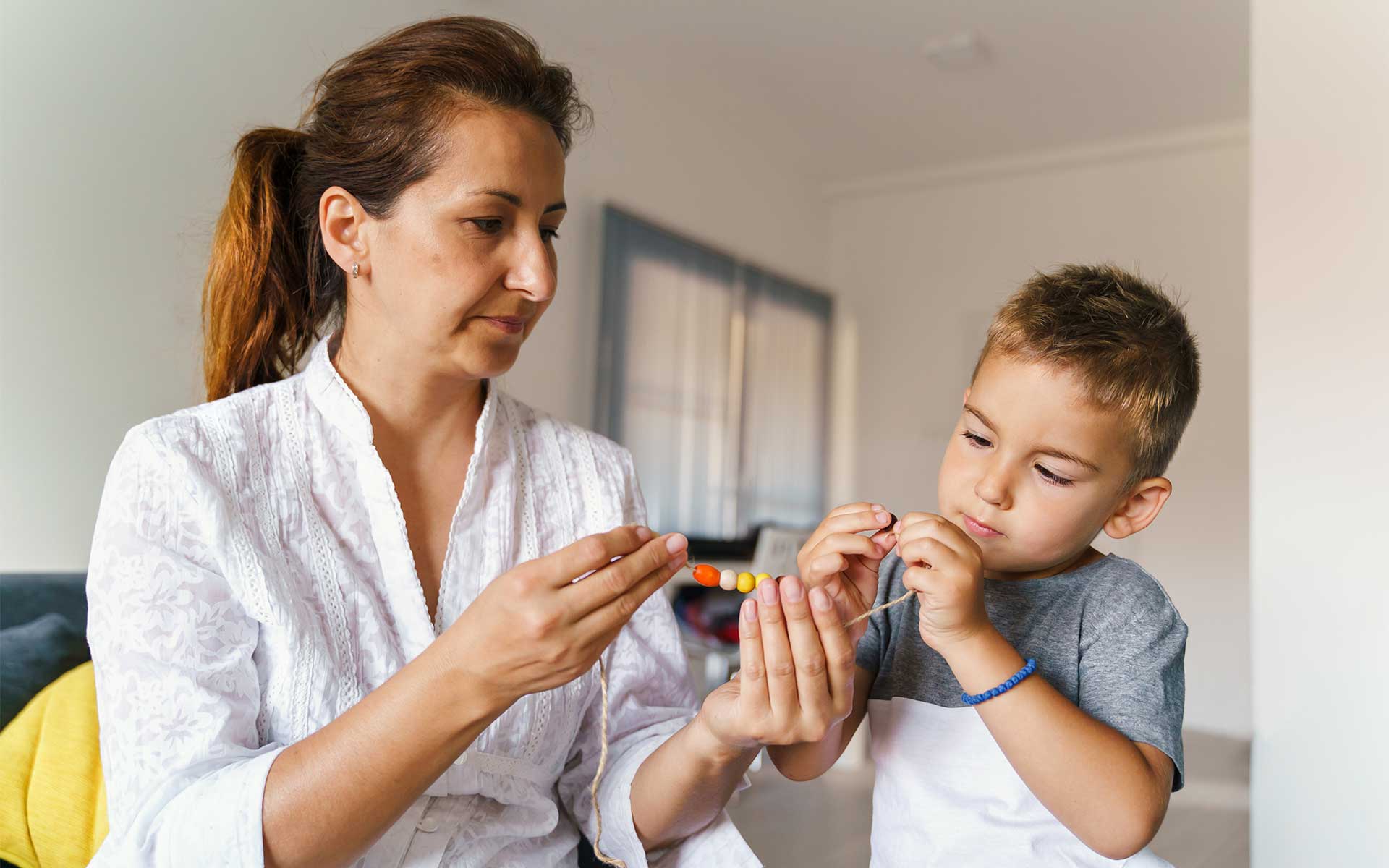
Looking for creative ways to boost your little one’s fine motor skills without spending a small fortune? You’re in good company. As parents and caregivers, we’re always on the hunt for cost-effective activities that can meaningfully contribute to our kids’ development.
Fine motor skills are vital—they form the basis of simple yet essential tasks like tying shoelaces or jotting down homework answers.
Consider this: while pacing up and down store aisles or clicking through online catalogs searching for educational toys might seem necessary, groundbreaking research indicates that these crucial skills begin to sprout as soon as babies reach one or two months old! Now, imagine discovering that dollar stores are packed with hidden gems perfect for this very purpose.
Yes, our exploration into budget-friendly finds is about to reveal how modestly priced items can be magically transformed into captivating fine motor activities.
In this blog, we’ll walk you through some great dollar-store discoveries handpicked for their developmental benefits. Get ready to see how ordinary objects can become instrumental in fortifying those petite palms and fingers—all while being kind to your wallet!
Key Takeaways
- Dollar stores are full of affordable items that can help children develop their fine motor skills.
- Simple household tools like kitchen tongs, spray bottles, and paper cups can be used for fun activities to strengthen kids’ hands and fingers.
- Activities like sorting beads, using tweezers, or squeezing hair gel bags are not only enjoyable but also improve a child’s dexterity and hand-eye coordination.
- Office supplies from the dollar store like rubber bands and pencil erasers offer creative ways to work on fine motor skills through pinching and gripping exercises.
- Children develop these important skills at their own pace by engaging in playful tasks that incorporate everyday items.
Importance of Fine Motor Skills Development

Developing fine motor skills is critical, as they lay the foundation for a host of daily activities that we often take for granted. From buttoning clothes to writing with a pencil, these abilities begin taking shape in our earliest years and are pivotal in fostering independence and dexterity in children as they grow.
Essential for Daily Activities
We see how vital fine motor skills are in our kids’ everyday lives. Brushing teeth, buttoning shirts, and gripping a pencil all require these small muscle movements. Without them, even simple tasks become tough challenges for little ones.
They start picking up these skills early on as babies grab at toys or food. As they grow, so does their ability to handle objects with care and precision. It’s amazing watching toddlers master zippers or use spoons without making a mess! Fine motor skill development truly shapes their independence and confidence in daily routines.
Developed in the Earliest Years of Life
Babies as young as one or two months start to develop fine motor skills. These skills are the small movements that use the muscles in their fingers, hands, and arms. They learn to grab things, move toys around, and later on they learn to dress themselves or write with a pencil.
This growth continues into early elementary school where kids get better at using these skills every day.
Our little ones need these abilities for pretty much everything they do. Think about how often they use their hands from morning till night; brushing teeth, holding spoons, and playing with blocks all require fine motor control.
As parents and educators in early childhood education, it’s our job to make sure kids have plenty of chances to exercise those tiny muscles in fun ways!
Children Develop Skills at Their Own Pace
Every child is unique, and this shines through in how they pick up new skills. Their fine motor abilities blossom not all at once but over years of touching, grabbing, and playing.
Some youngsters might master picking up small toys early on, while others may take more time to grip a crayon confidently. This range in development is perfectly normal.
We see children flourish from when their little hands first reach out to the bustling energy as they zip buttons or build with blocks in preschool. If your kid seems a bit behind or way ahead of others their age, it’s okay! They’re following their own timeline.
If worries crop up about their growth, it’s wise to chat with a pediatrician who understands child development best.
Encouraging Fine Motor Skill Development

As we come together to support the little ones in our lives, it’s crucial to find creative and accessible ways to foster their fine motor skill development. Introducing playful activities with simple items not only makes this essential growth fun but also integrates seamlessly into everyday routines, setting the stage for a lifetime of dexterity while letting kids simply be kids.
Through Play and Everyday Items
We all know that kids love to play, and it turns out their favorite games can help them grow stronger. Playtime is more than fun; it’s a chance for children to work on fine motor skills using items we have around the house.
Simple things like kitchen tools become toys that build little muscles. Picture a child using a turkey baster to transfer water from one cup to another or filling an ice cube tray with beads—each squeeze and pinch boosts their dexterity.
Let’s turn chores into challenges! Hand your kid a spray bottle and watch them clean windows while they give their fingers a workout. Even tidying up with a broom & dustpan gives those hands and wrists valuable exercise without them even knowing it.
Our homes are full of these opportunities, so let’s make the most of them every day!
Involves Coordinated Movements of Smaller Muscle Groups
Fine motor skills let kids do tasks like writing, buttoning, and cutting with scissors. These skills need small muscles in the hands and fingers to work together. Think of them like a team playing a sport—every player must do their part for success.
Kids start learning these movements very young. By grabbing toys or touching mom’s face, they practice using their hands. As they grow, picking up peas or putting shapes into holes gets easier for them.
Each little action is like a workout for their tiny hand muscles!
Development From Infancy to Early Elementary School
Babies as young as one or two months old start to grab and touch things. This is the beginning of their fine motor skill journey. They learn more as they grow, using their hands to explore the world around them.
By preschool and early elementary school, kids are cutting with scissors, drawing detailed pictures, and writing their names.
We make sure children have lots of chances to play and learn at their own speed. Every child is different; some may pick up skills quickly, while others take a bit more time. Playtime isn’t just fun—it’s also when children practice controlling their fingers and hands.
By doing this regularly, they get ready for all kinds of daily tasks later on in life.
Everyday Items for Fine Motor Skill Development

We’re always surrounded by tools that can help little fingers get stronger, and we’ll show you how common household items become the building blocks for mastering fine motor skills—keep reading to transform the ordinary into extraordinary learning experiences!
Kitchen Items
We often overlook simple kitchen items as tools for helping kids develop their fine motor skills. Think about how using tongs can teach little hands to grasp and release, just like picking up toys.
Spoons and spatulas turn into instruments for transferring items from one place to another, building precision and control. Even a turkey baster offers a unique way to practice squeezing and releasing motions.
Get creative with paper cups, dish sponges, or ice cube trays in fun activities. Kids can stack cups, cut sponges into shapes or fill trays with water or small objects—each task strengthening tiny muscles in their fingers.
Divided trays work great for sorting exercises; they can move straws or beads from section to section. With paper plates, children enjoy cutting them into masks or fans which is great practice for scissor skills too.
Organizational Items
Let’s talk about how items meant to tidy up can also boost kids’ fine motor skills. Divided boxes and small containers, which you might use to sort your craft supplies or screws, are perfect for little hands.
Kids love filling each section with different objects like beads or buttons. This activity helps them practice using their fingers carefully and precisely.
Strainers aren’t just for the kitchen anymore! We can turn these into fun organizational tools during playtime. Children delight in poking pipe cleaners or feathers through the holes.
Their tiny muscles get stronger as they focus on getting each item through just the right spot. It’s a simple way to make organization an exciting game that improves their dexterity.
Art and Craft Supplies
We often visit the Dollar Store to find art and craft supplies for our kids. These items are not just for making pretty pictures. Paint trays become palettes for sorting beads, or they can challenge little fingers to place buttons into each section.
Silk flowers invite kids to pluck petals, practicing their grip and control.
Glass gems and dowels turn into a game of balancing or decorating homemade paintbrushes. Kids tweezers are perfect for picking up small objects like beads, which boosts hand-eye coordination.
Every time we get creative with these simple supplies, children’s fine motor skills take a leap forward—all without breaking the bank!
Dollar Store Items for Fine Motor Skill Development

In our journey to bolster fine motor skills, we often overlook the treasure trove of resources that is the dollar store. With a plethora of inexpensive finds, we can turn simple shopping trips into gold mines for developmental tools that spark both fun and growth in children’s dexterity.
Inexpensive Options
We love finding budget-friendly tools for fine motor skill development at the Dollar Store. Tongs, paper cups, spoons, and spatulas are perfect for picking up small items and sorting them into containers.
Using these simple kitchen gadgets can help kids build precision in their movements.
You can also grab office supplies like rubber bands to stretch over cans or cleaning supplies such as spray bottles for squeezing exercises. These activities bolster hand strength and coordination.
Look around; you might find other treasures like turkey basters or sponges that turn ordinary tasks into exciting challenges for little fingers.
Office Supplies
Office supplies from the dollar store are great for our kids’ fingers and hands. Kids tweezers, for example, help them pick up small items which build precision. This is just like what an occupational therapist might use during therapy sessions.
Pencil erasers also offer a fun way to develop fine motor skills. Our little ones can practice pinching and gripping as they erase small areas or drawings.
We use masking tape to create shapes or lines on tables or floors; this encourages children to stick and peel, enhancing their dexterity. Art & craft supplies often include things like colorful paper clips that can be linked together or sorted into patterns and sequences.
These simple activities strengthen tiny muscles in playful yet effective ways every day.
Cleaning Supplies
We often overlook cleaning supplies for fun activities, but they’re great for fine motor skill development. For example, using a spray bottle helps children strengthen their hand and finger muscles as they squeeze the trigger.
Kids can practice gripping and maneuvering with items like brooms and dustpans. Even plungers can become tools of play while kids learn to control the movement of their hands.
Let’s make chores enjoyable! Give your child a spray bottle filled with water and let them mist plants or clean windows. This activity builds coordination in a playful way. Have them sweep up small piles with a broom and dustpan – it’s like a mini workout for young fingers and wrists.
They’ll have so much fun; they won’t realize they’re developing essential life skills!
Other Interesting Supplies
Let’s get creative with hair gel from the dollar store. We can fill a zipper-seal bag with it and add some small toys or beads. Kids love to squish and move the items around, which is great for their finger muscles.
This kind of sensory play also keeps them engaged.
We find balloons at the dollar store too, perfect for fine motor skill fun. Children can practice pinching and gripping as they stretch and fill them up. Even tying them off is a good challenge! Plus, filled balloons can become stress balls that children squeeze to build hand strength – just make sure there’s adult supervision to avoid any risks with popped balloons!
Strengthening Children's Hands and Fingers
We can find lots of fun things at the Dollar Store to make our children’s hands and fingers stronger. Squeezing hair bands onto pencils is a great workout for little fingers. Kids can also sort colorful beads or buttons, which helps them improve their grip and control.
Playing with different items from the store challenges kids in new ways. They love using tweezers to pick up small objects like pom-poms or erasers. This really strengthens their pinch grasp, which is key for writing later on.
Pressing stickers onto paper gives them a good finger stretch too. It’s all about making those tiny muscles work without the kids even knowing they’re practicing!
Conclusion
Let’s get those little fingers moving with dollar store finds! Did you see how easy it is to turn everyday items into fine motor skill builders? Think about what you already have at home that can help.
Can you imagine the fun your kids will have sorting buttons or using tongs? Remember, every small step counts towards their growth and independence. Now go ahead, make fine motor play a joyful part of your child’s day with just a few dollars!
Contact KidsCare Home Health
Contact KidsCare Home Health today for more information on our pediatric occupational, speech, or physical home therapy services.
FAQs
1. What are fine motor skills?
Fine motor skills involve using the small muscles in our hands and fingers to do tasks like writing, buttoning a shirt, or picking up small objects.
2. Can I find activities at the dollar store to help with fine motor skills?
Yes! The dollar store has lots of fun items you can use for fine motor activities like beads for stringing, playdough for shaping, or puzzles for solving.
3. Why is it important to work on fine motor skills?
Working on fine motor skills is important because it helps with everyday actions like tying shoes and using utensils, as well as success in school tasks like cutting with scissors and drawing.
4. Are there fun games from the dollar store that also improve these skills?
Absolutely! Games from the dollar store, such as stacking blocks or threading laces, not only provide fun but also improve hand-eye coordination and dexterity which are part of fine motor development.















